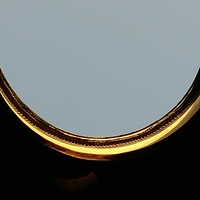José Vela Castillo
IE, Design / Theory, Faculty Member
Madrid, September 26th, 1953. James Dunn, U.S. ambassador in Spain and Alberto Martín-Artajo, Spanish Foreign Affairs minister signed the U.S.-Spain Agreements, also known as “Pacto de Madrid.” Following the treaty with the Vatican in... more
Madrid, September 26th, 1953. James Dunn, U.S. ambassador in Spain and Alberto Martín-Artajo, Spanish Foreign Affairs minister signed the U.S.-Spain Agreements, also known as “Pacto de Madrid.” Following the treaty with the Vatican in August and the previous membership of the FAO and the UNESCO (Spain eventually enter U.N. in 1955), Francoist Spain was slowly building up its legitimacy in the Western community of nations.
True, Spain didn’t enter into the European Recovery Program owed to its international isolation as a fascist state. But, after a hard and long diplomatic offensive, Franco obtained minimum aid from the U.S.
The U.S.-Spain agreements were not only a political achievement of the Franco regime, but had important economic and military consequences for the country (and for the future of the Regime). Spain, that desperately needed economical help owed to the disastrous autarchy policies implemented by the government, found a temporary relief in the American aid. The U.S., in turns, wanted to extend its defense capacities against the USSR (Spain was placed in a decisive strategic region), and was more than willing to pay the small price asked for.
Four main U.S. bases were, accordingly, set in Spain. One for the Navy (Rota), and three for the Air Force (Morón, Torrejón and Zaragoza). Placed in a diagonal that crossed Spain from southwest to northeast, assisted by a myriad of smaller settlements, they created the hugest infrastructure being built in Spain at the time.
An engineering office was stablished in Madrid, the AESB (“Architects Engineers Spanish Bases”) with a team of Spanish architects led by American technicians. Professional and technical exchange, so precious for Spanish architects, followed. Richard Neutra was also involved in a major competition for housing units for the American personnel, working jointly with a team of selected Spanish architects.
The direct impact of the built structures was, of course, limited to the bases themselves. Apart from the military installations, the U.S. did not promote any other architecture program in Spain. There were, of course, close contacts between the American and the Spaniards, but given the backwardness of Spanish mileu its impact was limited.
This paper presents and overview of the process of negotiations, design and construction of the U.S. bases as a way of understanding the scope and relevance of U.S. program in Spain and its impact in Spanish architecture. By showing the specificity of this program in the postwar European Reconstruction context, it will help to understand the different politics of space the U.S. deployed at the time and the involvement of local actors in their definition. And by means of new archival research, it sheds new light into a not sufficiently known episode in Spanish architecture in its process of modernization.
True, Spain didn’t enter into the European Recovery Program owed to its international isolation as a fascist state. But, after a hard and long diplomatic offensive, Franco obtained minimum aid from the U.S.
The U.S.-Spain agreements were not only a political achievement of the Franco regime, but had important economic and military consequences for the country (and for the future of the Regime). Spain, that desperately needed economical help owed to the disastrous autarchy policies implemented by the government, found a temporary relief in the American aid. The U.S., in turns, wanted to extend its defense capacities against the USSR (Spain was placed in a decisive strategic region), and was more than willing to pay the small price asked for.
Four main U.S. bases were, accordingly, set in Spain. One for the Navy (Rota), and three for the Air Force (Morón, Torrejón and Zaragoza). Placed in a diagonal that crossed Spain from southwest to northeast, assisted by a myriad of smaller settlements, they created the hugest infrastructure being built in Spain at the time.
An engineering office was stablished in Madrid, the AESB (“Architects Engineers Spanish Bases”) with a team of Spanish architects led by American technicians. Professional and technical exchange, so precious for Spanish architects, followed. Richard Neutra was also involved in a major competition for housing units for the American personnel, working jointly with a team of selected Spanish architects.
The direct impact of the built structures was, of course, limited to the bases themselves. Apart from the military installations, the U.S. did not promote any other architecture program in Spain. There were, of course, close contacts between the American and the Spaniards, but given the backwardness of Spanish mileu its impact was limited.
This paper presents and overview of the process of negotiations, design and construction of the U.S. bases as a way of understanding the scope and relevance of U.S. program in Spain and its impact in Spanish architecture. By showing the specificity of this program in the postwar European Reconstruction context, it will help to understand the different politics of space the U.S. deployed at the time and the involvement of local actors in their definition. And by means of new archival research, it sheds new light into a not sufficiently known episode in Spanish architecture in its process of modernization.
